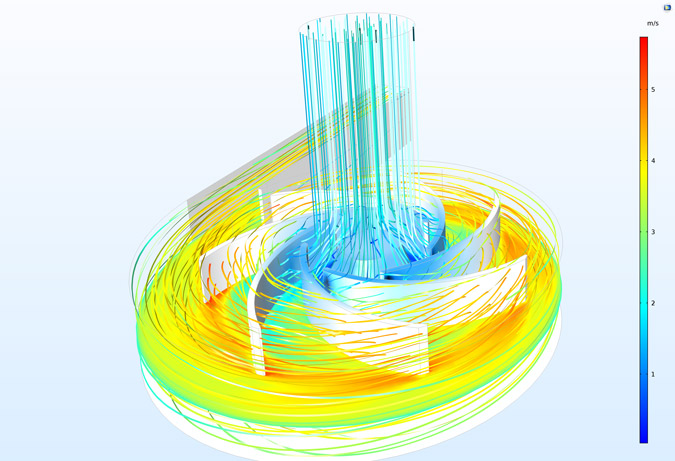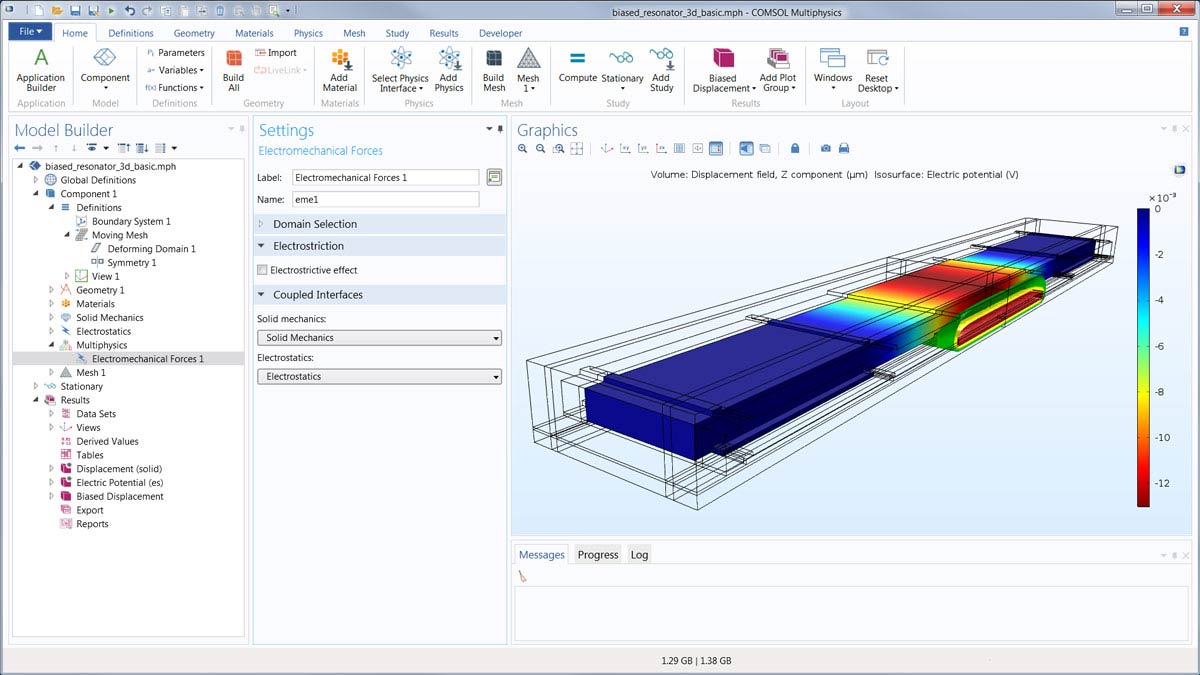

Click the Compute button to compute the shift in the conduction and valance band edge and the effective band gap. The user can also control the maximum mesh element size used for the studies. The valence band offset is updated automatically and should be checked for positivity by the app user. To use the app, enter the desired superlattice parameters, including the widths of the well and the barrier layer, the effective masses for electrons and holes in those layers, the band gaps in those layers, and the conduction band offset. Device engineers can use the tool to quickly compute the effective band gap for a given periodic structure and iterate the design parameters until they reach a desired band gap value. The tool uses the effective mass Schrödinger equation to estimate the electron and hole ground state energy levels in a given superlattice structure. The superlattice band gap tool helps the design of periodic structures made of two alternating semiconductor materials (superlattices). New Application: Superlattice Band Gap Tool User-Defined Impact Ionization ModelĪ user-defined model is now available for the impact ionization feature. In addition to traps with specified species types, traps with specified neutral energy levels can now also be defined using the same general concentration profile tools available for doping and traps. More Options for Trap Density Specificationįor each trap species type, in addition to the sum of trap densities, each individual contribution is now available as an option in the corresponding drop-down menu. Two new examples are included in the Semiconductor Module that help illustrate the usage of these various built-in functionalities.Īpplication Library path for an example modeling the Schrödinger equation: Semiconductor_Module/Verification_Examples/double_barrier_1d Other Performance Improvements Current-Driven Metal ContactsĪ new formulation achieves easier convergence for models with current-driven metal contact boundary conditions. Appropriate boundary conditions and study types are implemented for you to set up models easily and to compute relevant quantities in various situations, such as the eigenenergies of bound states, the decay rate of quasibound states, the transmission and reflection coefficients, the resonant tunneling condition, and the effective band gap of a superlattice structure. The newly added Schrödinger Equation interface solves the single-particle Schrödinger equation for general quantum mechanical problems in 1D, 2D, and 3D, as well as for the electron and hole wave functions in quantum-confined systems under the envelope function approximation. New Physics Interface: Schrödinger Equation

Review these Semiconductor Module updates in further detail below. For users of the Semiconductor Module, COMSOL Multiphysics ® version 5.3 brings a new Schrödinger Equation physics interface for quantum mechanical problems as well as several new models.


 0 kommentar(er)
0 kommentar(er)
